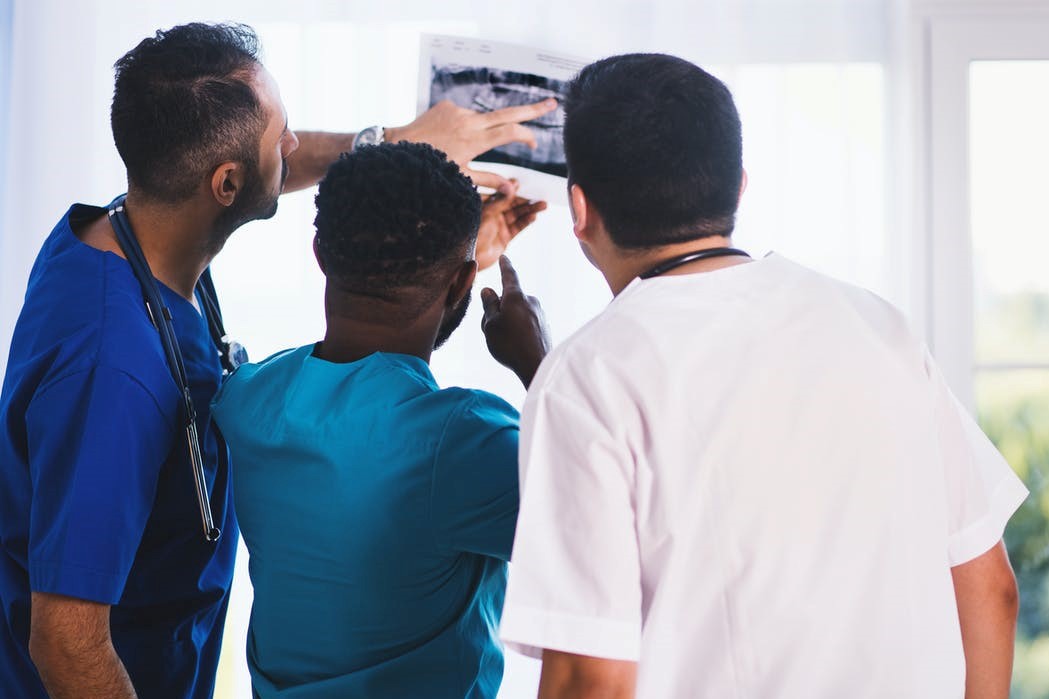
Pulmonological examination, what is it and what is it for? What does the pulmonologist do?
The pulmonologist deals with the diagnosis and treatment of pathologies that may affect the structures of the respiratory system: larynx, trachea, bronchi, lungs, diaphragm and rib cage
By treating diagnosed pathologies, he tries to prevent the onset of respiratory insufficiency or at least slow down its progression as much as possible.
If necessary, he can call on the services of an allergist, thoracic or cardiovascular surgeon.
The pathologies most often treated by the pulmonologist are:
- Allergic asthma
- Inflammatory diseases such as laryngitis, bronchitis, pneumonia and brocopneumonia, whether in acute or chronic form, such as chronic obstructive pulmonary disease (COPD)
- Tuberculosis
- Lung cancer
- Sarcoidosis
What procedures are most commonly used by the pulmonologist?
The pulmonologist first collects information on the patient’s medical and family history, trying to obtain as accurate a history as possible.
He or she inquires about risk factors for respiratory diseases (such as smoking and exposure to toxic substances) and about the presence of any other pathologies, especially allergic, autoimmune or cardiovascular, even in family members.
This is followed by an objective test, which involves inspection, palpation, percussion and auscultation of the chest, after which he may prescribe diagnostic tests.
Frequently requested tests include:
- Laboratory tests
- Chest X-ray
- Spirometry
- Chest CT scan
- Biopsy
- Endoscopy
When to ask for a pulmonologist visit?
People often turn to the pulmonologist when the problem is at an advanced stage and difficult to treat.
This is why it is better not to neglect the initial symptoms of diseases that can affect the respiratory system and ask for an appointment with this specialist at the first signs.
Chronic obstructive pulmonary disease may, for example, manifest itself with a cough often associated with abundant mucus production, respiratory breathlessness and the production of hisses or whistles during breathing, signs that it might be worth consulting a pulmonologist.
Read Also
Emergency Live Even More…Live: Download The New Free App Of Your Newspaper For IOS And Android
Benefits And Risks Of Prehospital Drug Assisted Airway Management (DAAM)
Blind Insertion Airway Devices (BIAD’s)
Oxygen-Ozone Therapy: For Which Pathologies Is It Indicated?
Hyperbaric Oxygen In The Wound Healing Process
Venous Thrombosis: From Symptoms To New Drugs
What Is Intravenous Cannulation (IV)? The 15 Steps Of The Procedure
Nasal Cannula For Oxygen Therapy: What It Is, How It Is Made, When To Use It
Pulmonary Emphysema: Causes, Symptoms, Diagnosis, Tests, Treatment
Extrinsic, Intrinsic, Occupational, Stable Bronchial Asthma: Causes, Symptoms, Treatment
A Guide To Chronic Obstructive Pulmonary Disease COPD
Bronchiectasis: What Are They And What Are The Symptoms
Bronchiectasis: How To Recognise And Treat It
Pulmonary Vasculitis: What It Is, Causes And Symptoms
Bronchiolitis: Symptoms, Diagnosis, Treatment
Chest Pain In Children: How To Assess It, What Causes It
Bronchoscopy: Ambu Set New Standards For Single-Use Endoscope
What Is Chronic Obstructive Pulmonary Disease (COPD)?


